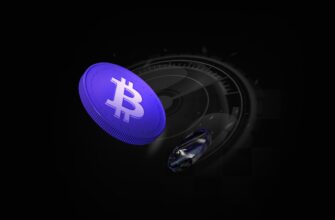What is IOTA?
IOTA is a revolutionary cryptocurrency designed to power the Internet of Things (IoT) ecosystem. Launched in 2016 by David Sønstebø, Sergey Ivancheglo, Dominik Schiener, and Dr. Serguei Popov, IOTA diverges from traditional blockchain technology by using a proprietary system called the Tangle. Unlike Bitcoin or Ethereum, IOTA aims to enable feeless microtransactions and scalable data transfer between IoT devices, making it a standout player in the crypto space. Its native token, MIOTA, facilitates transactions and network participation.
How Does IOTA Work? The Tangle Explained
IOTA replaces blockchain with the Tangle, a Directed Acyclic Graph (DAG) structure. Here’s how it works:
- No Miners: Users validate two previous transactions to send their own, eliminating the need for energy-intensive mining.
- Feeless Transactions: Without miners, there are no transaction fees, enabling microtransactions.
- Scalability: The Tangle becomes faster and more efficient as more users join the network.
This design addresses blockchain’s limitations, such as high fees and slow speeds, positioning IOTA as ideal for IoT applications.
Key Features of IOTA
- Feeless Transactions: Enables microtransactions for IoT devices, like paying per-use for sensors or bandwidth.
- Quantum Resistance: Uses quantum-proof cryptographic algorithms to future-proof the network.
- Partnerships: Collaborations with Jaguar Land Rover, Dell, and the European Union underscore real-world adoption.
- Data Integrity: Securely timestamp and store data streams from IoT devices.
IOTA Use Cases
1. Smart Cities: IOTA can manage energy grids, traffic systems, and waste management via machine-to-machine payments.
2. Supply Chain: Track goods in real-time and automate payments between suppliers.
3. Digital Identity: Securely manage IoT device identities to prevent spoofing.
4. Mobility: Enable electric vehicles to pay autonomously for charging or tolls.
Challenges and Criticisms
Despite its innovation, IOTA has faced hurdles:
- Centralization Concerns: The Coordinator node, a temporary security feature, led to criticism about centralization. IOTA 2.0 aims to remove it.
- Security Issues: A 2020 wallet hack compromised $2 million in MIOTA, though funds were later reimbursed.
- Adoption Barriers: Competing with established blockchains and regulatory uncertainty pose challenges.
IOTA FAQ
Is IOTA a blockchain?
No. IOTA uses the Tangle, a DAG structure that eliminates blocks, chains, and miners.
How do I buy IOTA?
Purchase MIOTA on exchanges like Binance, Bitfinex, or OKX using BTC, ETH, or fiat currencies.
What makes IOTA unique?
Feeless transactions, scalability, and focus on IoT set it apart from traditional cryptocurrencies.
Is IOTA secure?
While past vulnerabilities existed, IOTA 2.0 introduces full decentralization and enhanced security protocols.
What’s next for IOTA?
IOTA 2.0 promises a fully decentralized network, smart contracts, and expanded industry partnerships.
Conclusion
IOTA redefines decentralized transactions with its Tangle technology, targeting IoT scalability and feeless microtransactions. While challenges remain, its partnerships and upcoming upgrades position it as a key player in the crypto and IoT landscapes. Stay updated on IOTA’s journey as it bridges the gap between blockchain potential and real-world utility.








